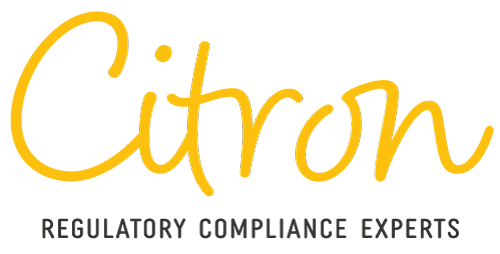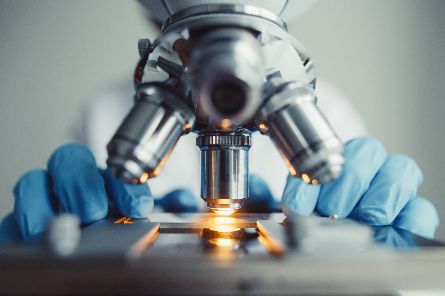

Citron can help you substantiate product
claims and prioritize both consumer safety and satisfaction.
Thorough product safety testing is essential for the health of consumers. Manufacturers can employ various methods, including dermatological, microbiological, and toxicological assessments, to ensure their products are safe, effective, and reliable while meeting regulatory standards. Emphasizing safety fulfills legal and ethical obligations and demonstrates a commitment to quality.
MICROBIAL TESTING
Manufacturers must conduct thorough testing for bacteria, yeast, and mold to demonstrate effective preservation methods, in line with FDA's stringent safety standards, including the new MoCRA requirement for cosmetics and personal care products. This compliance not only ensures product quality and consumer safety throughout its shelf life, but also evaluates the efficacy of preservatives, ensuring that products remain uncontaminated until they reach consumers.
By utilizing innovative testing methods, manufacturers can effectively detect microorganisms and validate the antimicrobial properties of their products, thus adhering to U.S. consumer safety regulations.
By utilizing innovative testing methods, manufacturers can effectively detect microorganisms and validate the antimicrobial properties of their products, thus adhering to U.S. consumer safety regulations.
- Total Aerobic Microbial Count (TAMC): This method involves culturing samples on general media to determine the total number of viable aerobic bacteria present in the product. The sample is incubated at a specific temperature (usually 30-35°C) for 48-72 hours. It is widely used to evaluate the overall microbial quality of products.
- Total Yeast and Mold Count (TYMC): Similar to TAMC, this method focuses specifically on quantifying the yeast and mold populations in products. Samples are incubated on selective media conducive to fungal growth (usually at 20-25°C) and assessed after 3-5 days.
- Pathogen Testing: This involves testing for specific pathogenic microorganisms, such as Salmonella, Escherichia coli, Pseudomonas aeruginosa, and Staphylococcus aureus. Specific selective media and incubation conditions are used to detect these pathogens in the product. This testing is crucial for ensuring the safety of cosmetics and OTC products.
- Preservative Challenge Testing: This method evaluates a product's ability to inhibit the growth of microorganisms after being inoculated with a defined microbial population. The product is challenged with specific strains, incubated for a set period, and then assessed to determine the effectiveness of the preservatives in the formulation.
- Biofilm Formation Assessment: This method tests for the ability of bacteria to form biofilms on surfaces within the product or packaging. Biofilms are structured communities of microorganisms that can lead to contamination. Testing typically involves exposing the product to specific bacteria and assessing growth patterns over time.
- Bacterial Endotoxin Testing (BET): This assay assesses the presence of endotoxins (toxins released from the cell walls of Gram-negative bacteria) in water-based cosmetic formulations or OTCS. The Limulus Amebocyte Lysate (LAL) test is commonly used for detecting endotoxins and ensuring the products contain safe levels.
- Atmospheric Pressure Plasma Treatment (APPT): While not a direct testing method, APPT can be utilized to reduce microbial load on cosmetic products. Testing ensures that post-treatment, products still meet microbial limits, validating the efficacy of the treatment process.
- Polymerase Chain Reaction (PCR) Testing: PCR is a molecular method that amplifies microbial DNA for identification and quantification of specific pathogens or spoilage organisms present in cosmetic products. It allows for rapid and sensitive detection, even when microbes are present at low levels.
- Time-Kill Studies: This study evaluates the rate of reduction of specific microorganisms when exposed to a product over a defined period. Samples are taken at various intervals and plated to determine the number of viable organisms left.
- Indirect Methods (e.g., MPN, Turbidity): Some tests estimate microbial presence indirectly through methods like Most Probable Number (MPN), which calculates the presence based on statistical probabilities, or turbidity measurements, which indicate microbial growth by assessing cloudiness in liquid cultures.
stability testing
Stability testing is crucial for evaluating how a product's effectiveness, safety, and appearance vary over time under different environmental conditions. It helps determine shelf life and ensures products maintain their integrity, allowing manufacturers to meet consumer and regulatory expectations. Various methodologies are employed in the cosmetic and OTC topical industries to assess product safety and quality.
- Accelerated Stability Testing: Performed to quickly assess the potential for degradation and changes in physical, chemical, and sensory properties. This method involves storing products at elevated temperatures and humidity levels to speed up the aging process. Conditions such as 40°C/75% RH or 50°C can be used. By observing the product over a shorter time frame (often 6 months), formulators can predict how the product will behave over its shelf life.
- Long-Term Stability Testing: Evaluates changes in product quality over time and confirm that the formulation is stable under normal storage conditions. Products are stored under recommended conditions (usually room temperature and humidity) for the duration of their projected shelf life, typically up to 3 years. Observations are made at regular intervals (i.e., 0, 3, 6, 12, 24 months).
- Temperature Cycling: Assesses how product performance may be affected by extreme temperature conditions during shipping or storage. This method puts products through a series of temperature changes (e.g., cycling between high and low temperatures) to observe how they respond to thermal stress. This can include freeze-thaw cycles.
- Photostability Testing: Determines if light exposure affects the product's efficacy, safety, or appearance. Products are exposed to various light sources (UV, fluorescent, etc.) to evaluate any potential degradation due to light exposure. This can include in vitro testing using specific wavelengths and intensities.
- pH Testing: Ensure product stability as pH can significantly impact the solubility and stability of ingredients. The pH of the product is monitored over time to ensure it remains within a specified range. This is particularly important for products that are sensitive to pH changes.
- Physical Stability Testing: Ensure that the product maintains its intended use qualities over time. This assessment involves measuring changes in physical properties such as texture, color, viscosity, and separation to ensure uniformity and performance.
- Emulsion Stability Testing: Assess the stability of emulsified systems, particularly important in lotions and creams. Emulsion products are observed for phase separation, creaming, and coalescence over time. Techniques may include centrifugation or heating and cooling cycles to enhance observation.
- Vapor Pressure and Volatility Testing: Evaluate the loss of ingredients over time, particularly for air-sensitive compounds. This method determines how volatile the components of a product are, which can affect its performance and stability.
- Package Compatibility Testing: Ensures that packaging does not adversely affect the integrity or efficacy of the product. Assessing compatibility with packaging materials under varied conditions to detect any interactions between the product and its container that may affect stability.
dermatology and other efficacy testing
While safety is crucial, the efficacy of personal care, cosmetics and OTC products is equally significant. Efficacy testing evaluates how well a product performs its intended functions, such as moisturizing, reducing acne, or providing sun protection. Methods can include instrument-based assessments, like measuring skin hydration, and consumer trials, where feedback is gathered on user experiences. Rigorous efficacy testing bolsters consumer confidence and brand loyalty.
Dermatological testing is vital in assessing product safety, involving the application of products to human skin under clinical conditions to monitor for allergic reactions or irritation. This can include patch tests for skin compatibility and clinical use studies to evaluate performance over time, particularly for sensitive areas like the face or eyes. Such testing is essential to ensure that cosmetic products are safe for consumer use, reinforcing the importance of both safety and efficacy in product development.
Note: The FDA does not require these testing methods below for cosmetics or OTCs with common-use active ingredients.
Dermatological testing is vital in assessing product safety, involving the application of products to human skin under clinical conditions to monitor for allergic reactions or irritation. This can include patch tests for skin compatibility and clinical use studies to evaluate performance over time, particularly for sensitive areas like the face or eyes. Such testing is essential to ensure that cosmetic products are safe for consumer use, reinforcing the importance of both safety and efficacy in product development.
Note: The FDA does not require these testing methods below for cosmetics or OTCs with common-use active ingredients.
- In Vitro Testing: Useful for initial screenings of irritants or skin penetration, often as a preliminary phase before further testing. This method involves testing on cells or tissues outside of a living organism, often using cell cultures or reconstructed skin models. In vitro assays can assess properties such as penetration, irritation, and biochemical effects.
- Clinical Trials: These studies provide the most robust data on efficacy, including measurements of improvement in skin conditions, hydration levels, or anti-aging effects. Also used to test products with structure function claims, like pain relief products, scar treatments, etc. Human clinical trials are conducted to evaluate the efficacy and safety of cosmetic products or OTC topicals. The trials can be randomized and controlled, involving different groups receiving either the product or a placebo.
- Consumer Testing: Useful for marketing claims and understanding user satisfaction regarding texture, scent, and perceived effectiveness. Involves gathering qualitative and quantitative data from consumers who use the products under normal conditions. Surveys, questionnaires, and interviews can be utilized to collect feedback on experiences regarding product performance.
- Instrumental Measurement: Provides objective data that can support claims of hydration, oil control, color correction, etc. Utilizes specialized instruments to quantitatively measure the effects of topical treatments on skin properties. Examples include corneometry (for hydration), sebumetry (for oiliness), and chromametry (for color changes).
- Patch Testing: Important for safety assessments, especially for products intended for sensitive skin. A method where small amounts of a product are applied to the skin under controlled conditions to check for adverse reactions or sensitization. Can be done using standard allergens to assess potential irritants or allergens.
- Biophysical Testing: Helps in understanding how products interact with skin physiology and their effects on skin barrier function. Involves measuring biological properties of the skin before and after product application, focusing on parameters such as transepidermal water loss (TEWL), skin elasticity, and pH changes.
- Long-term Efficacy Studies: Used for products claiming long-lasting or cumulative effects, such as anti-aging creams or moisturizers. These studies assess the long-term effects of using a product over an extended period. Participants typically use the product daily while researchers monitor for cumulative benefits or side effects.
cannabis potency testing
- Potency Testing: .
- Terpene Profiling:
- Purity Analysis: heavy metal, risidual solvents, mycotoxins,
- Flavinoid Testing:
- Plant Health Screenings:
Disclaimer: Partner Experts are independent and do not reflect any endorsement of one another. Become a partner.
Citron Regulatory Compliance Corp.
© 2023 All rights reserved.